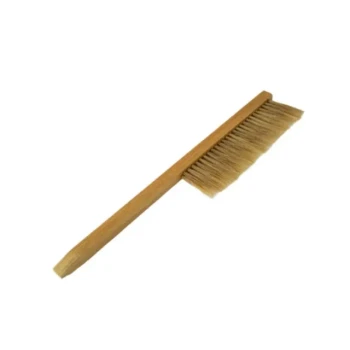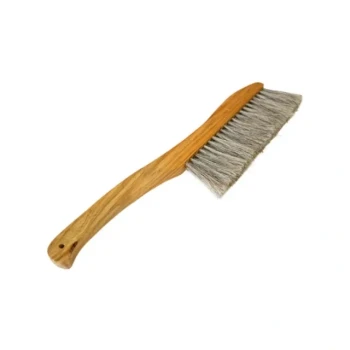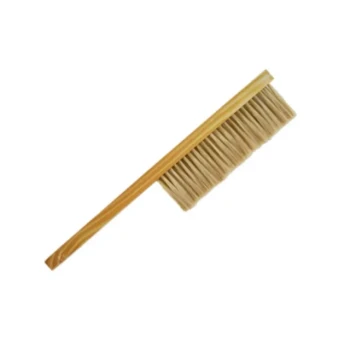In short, the primary benefit of polystyrene beehives for overwintering is their exceptional thermal insulation. This single property creates a cascade of positive effects, including reduced honey consumption, better moisture control, and a stable internal environment. These factors work together to significantly increase the colony's chances of survival and promote a more rapid population build-up in the spring.
Winter survival for a honeybee colony is a battle against cold and starvation. Polystyrene hives change the fundamental energy equation, allowing bees to allocate precious resources toward survival and growth instead of simply fighting to stay warm.
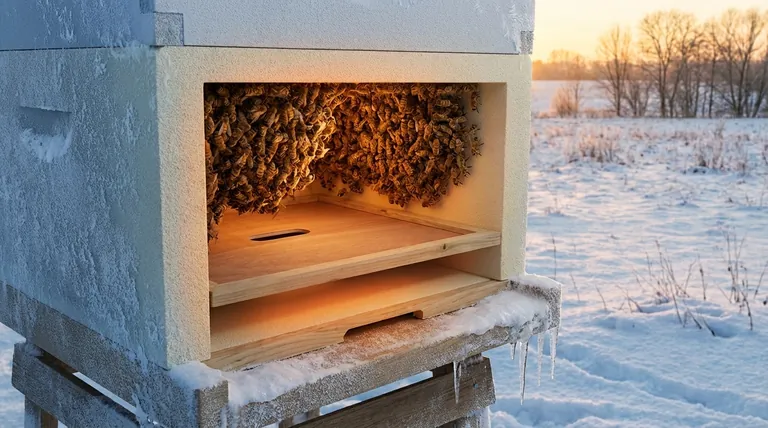
The Physics of a Winter Bee Cluster
To understand the impact of polystyrene, we must first understand the challenges a colony faces inside any hive during the cold months. The bees form a tight cluster to survive, with the queen protected at its core.
The Energetic Cost of Heat
A honeybee cluster generates heat by vibrating its flight muscles. This process is incredibly energy-intensive and is fueled by their winter food source: stored honey.
In a poorly insulated hive, this heat rapidly escapes into the cold outside air. The bees must therefore consume more honey at a faster rate just to maintain the minimum temperature for survival, increasing the risk of starvation before spring arrives.
The Danger of Condensation
The bees' respiration and activity release warm, moist air. When this humid air rises and hits a cold inner surface, like the inner cover or walls of a wooden hive, it condenses into water droplets.
This "internal rain" can drip down onto the cluster, chilling the bees and creating a damp, stressful environment. Wet bees become cold bees, and cold bees die. This moisture also promotes the growth of mold and other pathogens.
How Polystyrene Solves the Winter Equation
A high-density polystyrene hive acts as a thermal barrier, fundamentally altering the internal physics of the hive to the bees' advantage.
Dramatically Reduced Heat Loss
Polystyrene has a much higher insulation value (R-value) than wood. This means far less of the heat generated by the cluster is lost through the hive walls and roof.
Because the heat is contained more effectively, the bees expend significantly less energy to maintain their core temperature. This directly translates to lower honey consumption over the winter.
A Stable and Dry Internal Climate
The superior insulation keeps the interior surfaces of the hive warmer. These warmer walls are less likely to fall below the dew point, which drastically reduces or eliminates condensation.
By preventing the formation of condensation, polystyrene hives help keep the cluster dry and healthy. This stable, low-stress environment is critical for winter survival.
The Downstream Effects on Colony Health
The direct benefits of heat retention and moisture control create powerful secondary advantages that manifest in the spring.
Conserved Winter Stores
The most immediate impact is on the colony's food supply. With less honey being burned to generate heat, the colony's winter stores last longer, providing a crucial buffer against starvation during late winter and early spring when natural forage is still scarce.
Earlier and Stronger Brood Rearing
A queen will begin laying eggs in late winter to build the colony's population for spring. This brood must be kept at a consistent temperature of around 95°F (35°C).
In a stable, well-insulated polystyrene hive, the colony can maintain this brood-rearing temperature more easily, even during late cold snaps. This results in an earlier, more robust, and faster-growing population of forager bees ready for the first nectar flows.
Understanding the Trade-offs
While highly effective, polystyrene hives are not without their considerations. Objectivity requires acknowledging their potential downsides compared to traditional wooden hives.
Durability and Handling
Polystyrene is softer than wood and can be damaged more easily by hive tools during inspections. It can also be susceptible to damage from pests like mice or wax moths if not properly maintained and protected.
Moisture Management Nuances
While poly hives excel at preventing condensation on walls, they are also less "breathable" than wood. This means proper ventilation through the hive entrance and sometimes a top vent is still critical to allow excess water vapor to escape. An improperly ventilated poly hive can still trap humidity.
Cost and Environmental Impact
High-density polystyrene hives can have a higher upfront cost than basic wooden equipment. Furthermore, as a plastic product, their long-term environmental footprint is a factor for some beekeepers to consider.
Making the Right Choice for Your Goal
Selecting a hive type depends on your specific climate, management style, and beekeeping objectives.
- If your primary focus is maximizing winter survival rates in a cold climate: Polystyrene hives offer a clear and significant advantage due to their superior thermal performance.
- If your primary focus is a rapid spring build-up for early honey flows: The ability of poly hives to support earlier and more stable brood rearing makes them a very strong choice.
- If your primary focus is long-term durability and traditional methods: You may prefer wooden hives but should strongly consider adding external insulation wraps to mimic the thermal benefits of polystyrene.
By managing the hive's energy and climate, you give your colony its best possible chance to thrive through winter and emerge strong in the spring.
Summary Table:
| Benefit | Key Impact |
|---|---|
| Exceptional Thermal Insulation | Drastically reduces heat loss and energy expenditure. |
| Reduced Honey Consumption | Conserves winter food stores, lowering starvation risk. |
| Superior Moisture Control | Prevents condensation, keeping the cluster dry and healthy. |
| Stable Internal Environment | Supports earlier, more robust brood rearing in spring. |
Equip your apiary for success with HONESTBEE. Our high-density polystyrene beehives are engineered to provide the exceptional insulation commercial beekeepers and distributors need to maximize winter survival rates and ensure strong, productive colonies in the spring. Let us help you optimize your overwintering strategy. Contact HONESTBEE today to discuss wholesale pricing and availability.
Visual Guide
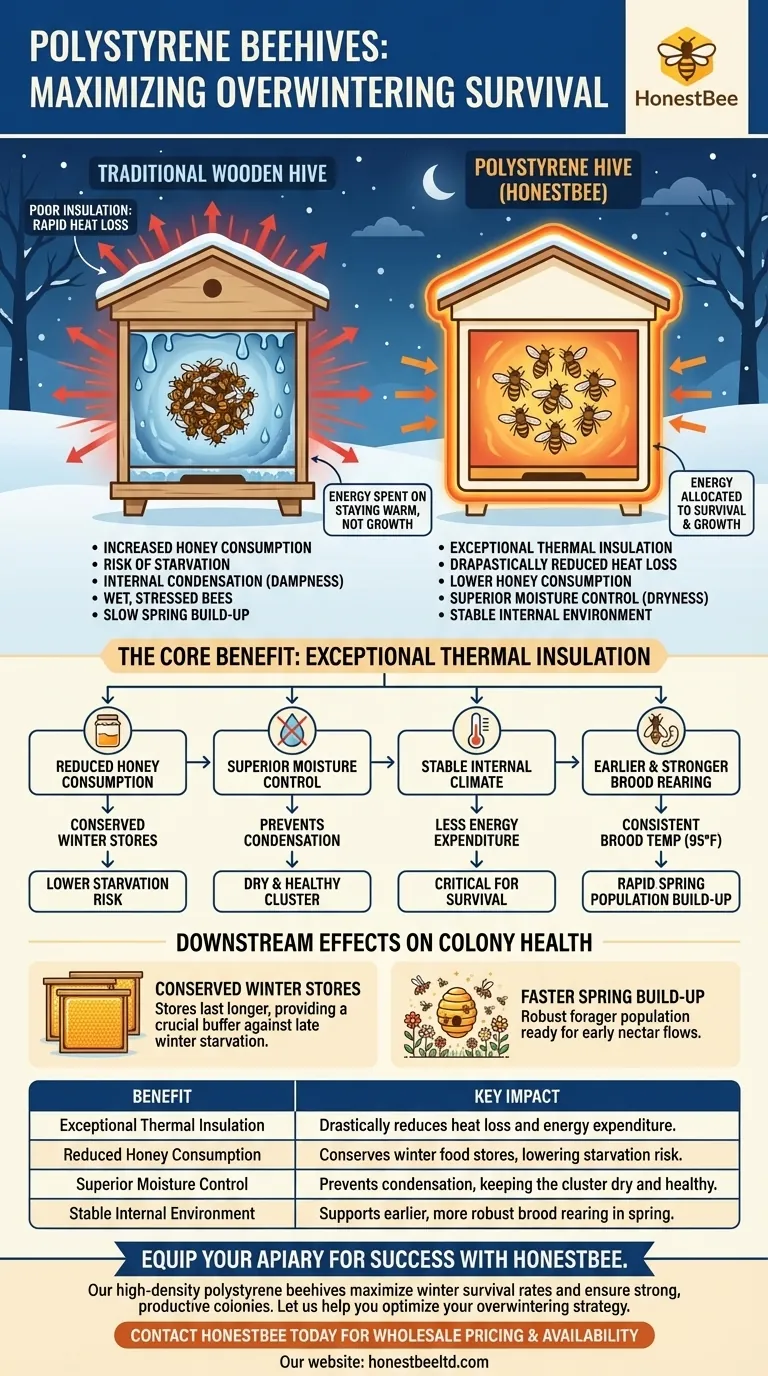
Related Products
- Inner Beehive Cover for Beekeeping Bee Hive Inner Cover
- Professional Drop-Style Hive Handles for Beekeeping
- Boardman Entrance Bee Feeder Durable Galvanized Steel and Wood Construction for Beekeeping
- Premium Comfort Grip Spring-Loaded Hive Handles
- Professional Grade Foldable Beehive Handles
People Also Ask
- What is an inner cover in a beehive and what are its features? A Key Tool for Hive Health & Management
- What are the advantages of using an inner cover in a beehive? Key Benefits for Hive Health & Beekeeper Efficiency
- What is the function of an inner cover in a beehive? Essential for Hive Health & Management
- What is the role of the inner cover in a beehive? Essential Climate Control for Hive Health
- How is the inner cover used to promote ventilation? Master Hive Climate Control for Healthy Bees











